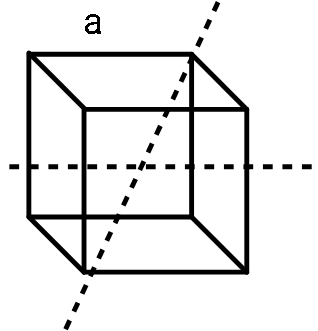Question
Question: A long string with a charge of \(\lambda\) per unit length passes through an imaginary cube of edge ...
A long string with a charge of λ per unit length passes through an imaginary cube of edge length a. The maximum flux of the electric field through the cube will be:
A. λa/ϵ0
B. 2λa/ϵ0
C. 6λa2/ϵ0
D. 3λa/ϵ0
Solution
There is a direct expression to find flux through a body and is called Gauss’s law. Flux is nothing but the density of field lines crossing a unit area. Amount of flux will be decided by the amount of charge present in the cube.
Formula used:
Charge can be obtained from charge density as:
q=λl
Gauss’s law:
"The flux through any surface enclosing charge q is q/ϵ0 or
ϕ=ϵ0q
Complete step by step answer:
We are given a long string with line charge density λ therefore, the charge obtained when this string passes through the cube (parallel to its base), we see that the total charge we will get will be:
q=λa
Consider the figure:

To get maximum flux outside the box, the maximum length of this string should pass through the box. So, we choose a cross diagonal orientation of such a string. The total length of the string in the box will be given as:
l=2a2+a2
This expression comes as a result of Pythagoras theorem applied to the triangle with our body diagonal as its hypotenuse l, base diagonal 2a as its base and one side a as its perpendicular.
This gives us total length as:
l=3a
So, the charge becomes
q=λ3a
Keeping this in Gauss’s law, we get required maximum flux as:
ϕ=ϵ0λ3a
Therefore the correct answer is option (D). 3λa/ϵ0.
Note:
From the question, the word maximum is quite important. One might naively conclude the wrong answer if the placement of the string in the box is wrong. The base diagonal 2a is nothing but the diagonal length in a square, as the base of a cube is just a square.
